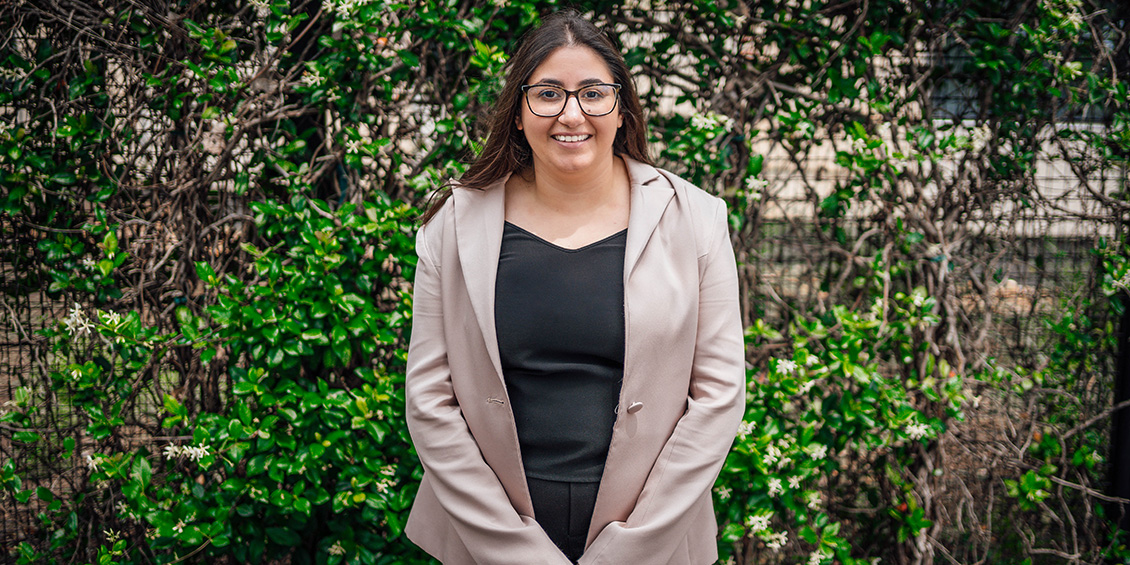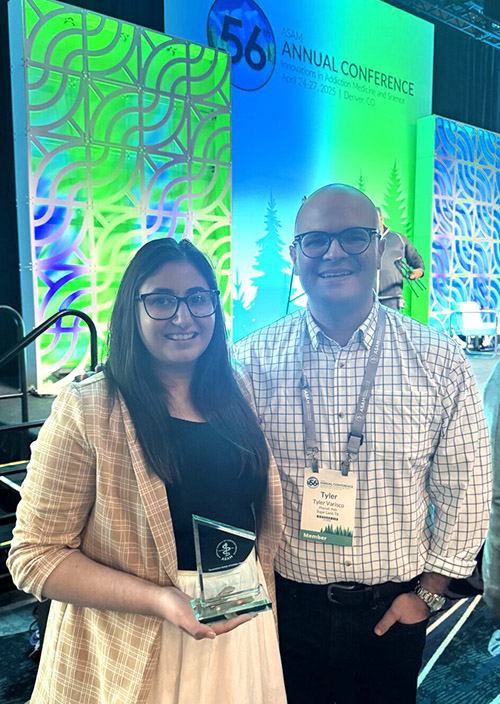Research News

Addressing Barriers in Accessing Life-saving Care
Ph.D. Candidate Yazdanfard Receives American Society of Addiction Medicine Abstract Award
April 29 — A new study showing how limited access to opioid use disorder (OUD) medication creates a barrier for patients seeking the life-saving treatment has drawn a top award for a University of Houston College of Pharmacy Ph.D. candidate from the American Society of Addiction Medicine (ASAM).

Sahar Yazdanfard, M.S., received the ASAM's Abstract Submission Award for student posters to present her findings at the organization's 56th Annual Conference April 24-27 in Denver, Colo.
Using three years of commercial claims data from 2021-2023, Yazdanfard's abstract, "Determinants of Increased Travel Burden for Patients Treated with Buprenorphine," examined the distances OUD patients had to travel to fill a prescription of buprenorphine at a community pharmacy. One of three FDA-approved medications for the treatment of OUD, the drug has been shown to reduce overdose risk and improve patient outcomes significantly. However, adherence depends heavily on the availability and consistency of patients' medication supply.
In Yazdanfard's study, change in travel burden was defined as the average change in pharmacy travel distances in the 180 days before and after buprenorphine initiation. The National Quality Forum, a group that creates health care quality measures, defines continuity of pharmacotherapy for opioid use disorder as a period of treatment that lasts at least 180 days, with no more than seven days of medication use interruption. It's important to note that this is the shortest possible duration of treatment known to reduce risk of overdose death.
"Of the 5,803 patients included in the study, 38.9% experienced an increase in travel distance after initiating buprenorphine treatment," Yazdanfard said. "For 90% of these patients, they traveled up to 22.5 miles to fill their buprenorphine prescription."
Additionally, the study examined the proportion of patients unable to fill buprenorphine at the same pharmacies they used in the 180 days prior to initiating buprenorphine. Nearly a quarter of patients had to switch pharmacies to fill their buprenorphine prescription. Of the patients who switched pharmacies, 59.7% experienced an increase in travel distance.
"For patients who switched pharmacies, 10% experienced an increase in travel distance of 33.5 or more miles, which suggests substantial variation in travel burden for these patients," Yazdanfard said.
Yazdanfard's abstract referenced a recent study which reported only 42.2% of pharmacies in Texas were adequately stocked to fill a one-week supply of buprenorphine, and less than half of pharmacies had ever dispensed the medication, further hindering treatment.
Through her research, Yazdanfard hopes to help shape more effective, data-driven solutions that expand access to treatment and reduce overdose-related deaths.
"By analyzing geographic disparities and the travel burden, we aim to inform policies that make this life-saving medication more readily available and equitable for those who need it most," Yazdanfard said.
Coauthors were Tyler J. Varisco, Pharm.D., Ph.D. ('21), assistant professor of pharmaceutical health outcomes and policy and assistant director of the Prescription Drug Misuse Education and Research (PREMIER) Center at UHCOP, and Smita Prasad, M.D., assistant professor of addiction medicine at Tulane University School of Medicine.
"We must remember that each data point represents a real person with a distinct story," Yazdandard said. "Our work is about more than just numbers; it is about providing dignity, opportunity, and hope to individuals and communities affected by opioid use disorder."
- Kristin Marie Mitchener